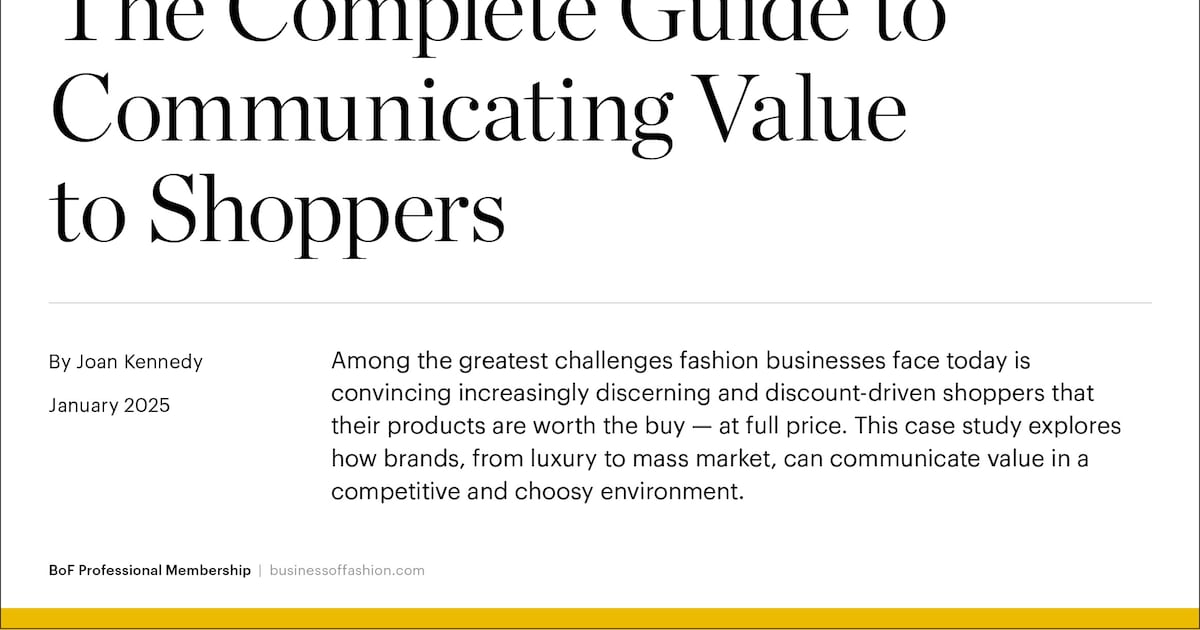
Before each purchase, an internal negotiation takes place in every shopper’s head: How much do I really want this, and is it worth the cost?
It’s only gotten harder to persuade consumers to answer “yes.”
Desire to spend on fashion is dwindling. In 2024, over 40 percent of shoppers in the US, UK and Germany said they were spending less on clothing, footwear and accessories than they did a year prior, according to The State of Fashion 2025 by The Business of Fashion and McKinsey. The number one risk fashion executives face in the year ahead is consumers’ appetite to spend, and competition for share of wallet is heating up.
It’s a concern at every level. At the top, luxury brands increasingly have to justify their high prices and face pressure from a new crop of brands trying to undercut them. At the bottom, a plethora of convenient and cheap options means brands have to work harder to stand out while assuring customers they aren’t sacrificing quality.
Today, fashion businesses increasingly need to prove to shoppers that they offer value — that what shoppers are getting for their money is greater than what they’re giving up. That’s not the same as just offering the cheapest option. Consumers are willing to spend on what they perceive as the right product.
“A lot of retailers who have performed badly have pegged bad performance on excuses. ‘Oh, inflation. Oh, the economy. Oh, the consumer is not spending,’” said Neil Saunders, managing director of research firm GlobalData Retail. “The honest truth is they’re spending. They’re just not spending with you because you haven’t added value.”
The situation presents challenges but also opportunities. Brands that are able to communicate their value to shoppers stand to gain market share and earn their loyalty.
That starts with having a clear position in the market, selling a differentiated product that cultivates desire, conceiving marketing that emphasises quality and distinctiveness and delivering a sales experience that makes shoppers feel the time they’re spending with you is rewarded. It ends with a product in consumers’ hands that feels matched to all the work the brand did behind the scenes.
This case study includes insights from Uniqlo, luxury upstarts Stòffa and Savette, hit womenswear brand Tuckernuck, American heritage label St. John and others on how to showcase value across every touchpoint, from designing a product to crafting imagery and creating the right store experience.
The strategies brands employ will vary by where they’re positioned in the market, but the ultimate goal is the same: to convince consumers their products are worth buying — and at full price.
Editor’s Note: This case study was revised on Jan. 30, 2025, to correctly attribute Trendalytics as the source for exhibit 5.

